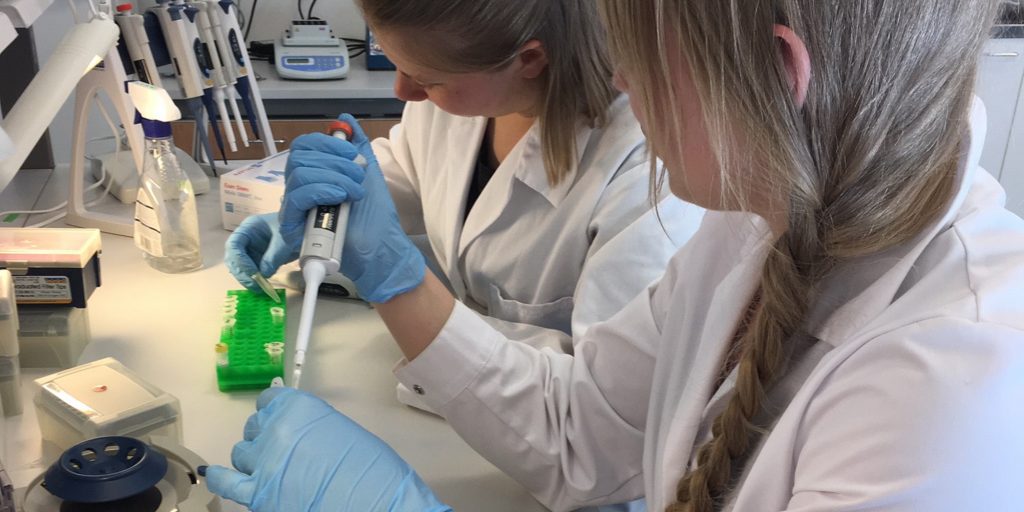Laboratories
Luomus supports and conducts research by producing its own laboratory analyses in the course of research projects. Luomus has two laboratories of its own: the Molecular Systematics Laboratory, or the DNA Laboratory, and the Laboratory of Chronology. Partnering with other institutions enables Luomus to take advantage of laboratory equipment housed elsewhere, for example to conduct geochemical and isotope geological analyses.
MOLECULAR SYSTEMATICS LABORATORY (DNA LABORATORY)
The Luomus Molecular Systematics Laboratory, or the DNA Laboratory, operates in the facilities of the Zoology Unit. It provides research groups from the Luomus Zoology and Botany Units with the environment they need to use methods of molecular genetics in their studies. The research at the Laboratory relates to the systematics of animals, plants or fungi, biogeography as well as conservation and evolutionary biology.

THE LABORATORY OF CHRONOLOGY
The Luomus Laboratory of Chronology is a national centre of expertise in dating and isotope methods, with its core duties comprising radiocarbon dating, luminescence dating and stable isotope analyses. In addition to developing and teaching these research areas, the Laboratory of Chronology also offers commercial analysis services. In 2017 and 2018 the Laboratory conducted a total of 628 radiocarbon analyses (Table 14).
The Chronology Team can determine the age and isotope ratios of organic and man-made materials, such as mammoth bone, tree rings, bricks, pottery and clam shells. From individual determinations, the analyses move towards more extensive analyses, through which full timelines of environmental change or human action can be compared. The methods used can also provide numeric data regarding the ratio of fossil and renewable material in a sample.
GEOLOGICAL LABORATORY METHODS
In terms of geochemical and isotope geology determinations, Luomus cooperates closely with the University of Helsinki’s Department of Geosciences and Geography, the Finland Isotope Geosciences Laboratory (SIGL) and the Nordsim-Vegacenter laboratory of the Swedish Museum of Natural History (Naturhistoriska riksmuseet).
This cooperation grants the Luomus Geology Team access to a wide variety of research instruments, which enables them to identify minerals and determine their structure, and conduct compositional analyses, trace element analyses as well as isotope and age determinations of minerals and rock varieties.